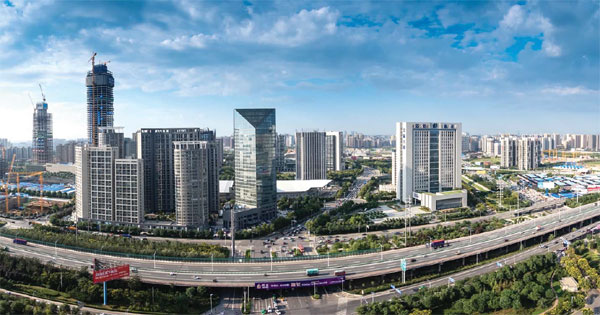High-tech zones up the game
Updated: 2015-10-09 07:19
By Andrew Moody(China Daily Europe)
|
|||||||||||
|
The Xi'an High-tech Industries Development Zone is home to some 20,000 companies, of which 3,000 have their headquarters there. Photos provided to China Daily |
They play role in upgrading China's industries in key areas such as Information technology, robotics, aerospace and ocean engineering
China's ancient capital and home of the terracotta warriors wrapped in an early autumn mist might seem a different world to California's Silicon Valley.
The northwestern Chinese city of Xi'an is, however, home to one of China's leading national high-tech parks, which the government hopes will produce the Microsofts and Apples of tomorrow. The sheer scale of the Xi'an High-tech Industries Development Zone dwarfs the walled Qin Dynasty (221-206 BC) Chinese capital.
The zone is home to some 20,000 companies, of which 3,000 have their headquarters there, as well as shopping malls, hotels and homes of millions of people.
This is not a lone initiative either. China has more than 100 similar national high-tech zones.
They will play a role in the technological upgrading of China's industries in key areas such as information technology, robotics, aerospace and ocean engineering that were identified as priorities by a Chinese government consultative committee report on Sept 29.
The oldest and best known of the technology parks, which was set up in the late 1980s, is Zhongguancun in Beijing's Haidian district, which gave birth to Chinese computer giant Lenovo and technology company Founder.
Other high-profile ones include Shenzhen High-tech Industrial Park, or SHIP, host to China's mobile communications giants Huawei and ZTE.
In their near-30-year history there can be little doubt these zones and parks have delivered results.
The big question is whether the huge scale of investment in terms of construction and the offering of rent-free periods, grants and other subsidies to companies locating there is justified.
There is also the issue of whether innovation can be planned in the first place, with Silicon Valley and other technology centers around the world often being more spontaneous university spin-offs.
Whatever the debate, there has been huge investment in innovation at Xi'an and not just by Chinese companies.
Over the past five years, foreign investment has been between $800 million and $1 billion annually.
Some of the Fortune Global 500 Companies located there are Samsung and Applied Materials, the US semiconductor company.
Today's Top News
China foreign trade decline narrows in September
Annaud 'stupefied' by Academy's decision to drop Wolf Totem
Germany continues border controls until November: media
Islamic State is prime suspect in Turkey bombing, as protests erupt
Opinion: Opportunity knocks for EU and China over next five years
Yuan rises for 7th day in a row, highest level since August
Reforms spark legal brain drain
High-tech zones up the game
Hot Topics
Lunar probe , China growth forecasts, Emission rules get tougher, China seen through 'colored lens', International board,
Editor's Picks

|

|

|

|

|

|







